Minangkabau Language as Ethnic Identity in Digital Era
on
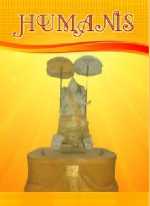
Journal of Arts and Humanities
p-ISSN: 2528-5076, e-ISSN: 2302-920X
Terakreditasi Sinta-3, SK No: 105/E/KPT/2022
Vol 27.3. Agustus 2023: 248-257
Minangkabau Language as Ethnic Identity in Digital Era
Oktavianus
Universitas Andalas, Padang, West Sumatera Correspondence email: oktavianus@hum.unand.ac.id
Article Info
Submited: 30th January 2023
Revised: 11th June 2023
Accepted: 26th June 2023
Publish: 31st August 2023
Keywords: Minangkabau language; ethnic identity; public spaces.
Corresponding Author:
Oktavianus
email:
DOI:
Abstract
This study aims to research Minangkabau language as an ethnic identity in this digital era. The researcher did the study in five areas in West Sumatra. It is a qualitative study in which all language phenomena contributing to the validity of findings are considered. Data are collected through participative and nonparticipative observations. The data for this study are in the form of written and spoken language observed in the domain of families, public and cyberspaces. The researcher had discussions and interviews through participative observation. Taking notes and photos of written and printed Minangkabau language are done through nonparticipative observation. The researcher also observed Minangkabau language attitude through nonparticipative observation. The result of the study indicates that the productivity and creativity of using the Minangkabau language in family domains, public and cyberspaces strengthen the role of the Minangkabau language as an ethnic identity. Cultural setting and the needs to advertise local products are among the factors which trigger the use of the Minangkabau language as the symbol of Minangkabau identity.
INTRODUCTION
Minangkabau language is one of the local languages in Indonesia with many speakers. Based on cultural statistical data from the Ministry of Education and Culture in 2016, Minangkabau language occupied the sixth position in Indonesia with approximately 5 million speakers. It is also one of the most widely used local languages in Indonesia.
Minangkabau language is not only spoken in West Sumatra but also used along the Batang Hari River (Jambi), Kampar River (Riau), Muko-Muko (Bengkulu), Negeri Sembilan (Malaysia), Natal and Barus (Central Tapanuli, North Sumatra) and Tapak Tuan (South Aceh)
(Nadra, 1997). Badan Pengembangan dan Pembinaan Bahasa, Ministry of Education, Culture, Research, and Technology noted that Minangkabau language is used in West Sumatera and some parts of Bengkulu, Riau, Jambi, and Aceh
(https://petabahasa.kemdikbud.go.id/data bahasa.php).
The use of Minangkabau language in various regions in Indonesia is related to mobility of Minangkabau people. They left their hometown and scattered across the regions in Indonesia and abroad. This voluntary migration is called marantau. For most Minangkabau people, marantau
is a step forward in building a better life and seeking knowledge (Naim, 2012).
Minangkabau language is categorized as a typologically neutral language not belonging to nominativeaccusative or ergative-absolutive language (Jufrizal, 2022). Minangkabau language is rich in proverbs and metaphors. Nature and the surrounding environment inspire people to create proverbs (Oktavianus, 2022a). The concept of Alam takambang jadi guru, 'the nature be the teacher,' becomes the basis to build their Minangkabau language. The use of proverbs and metaphors in the daily communication is one of the characteristics of Minangkabau people (Nafis, 1996; Navis, 1984).
Minangkabau language is rich in pragmatic aspects (Oktavianus & Revita, 2013). Pragmatic considerations greatly influence the ideal speech and utterances used in communication. Minangkabau people primarily do not express their ideas and feelings more straightforwardly (Errington, 1984). The use of metaphors and other figurative language color their language.
Minangkabau language has many functions. One of them is the marker of ethnic identity (Isman et al., 1978). The role of the Minangkabau language as an ethnic identity has been observed since 1978. However, the time gap that has been so long and rapid technological advancement towards industrial revolution 4.0 and even 5.0 with the label of the Internet of Things lead to the complexities of human life and the development of languages.
Languages in the world were entering the digital era. Contact between local, national, and foreign languages affects the Minangkabau language. Therefore, this writing aims to investigate the process and the continuity
of Minangkabau language as an ethnic identity in this digital era.
METHOD AND THEORY
This research is done from the perspective of a qualitative approach in which the researcher considers every possible language phenomenon which can contribute to the validity of the finding. The data are collected from public spaces in five main regions in West Sumatra Padang, Bukittinggi, Solok, Payakumbuh, and Tanah Datar. This research adopts methods and techniques of linguistic research as proposed by Sudaryanto (2018). Data for this study are collected through participative and nonparticipative methods (Simak Libat Cakap and Simak Bebas Libat Cakap). Discussion and interviews with Minangkabau families and school teachers are done in the area of the research. A close look at the Minangkabau language attitude of four families is done in Padang and Solok.
The nonparticipative method is collecting printed Minangkabau language in public spaces and objects in public places, such as banners, T-Shirts, and nameplates in the area of the research. The data analysis uses the referential and pragmatic identity methods. By applying these methods, the placement of Minangkabau language in public places is analyzed by referring to the context of using the Minangkabau language and the linguistic landscape approach with relevant linguistic theories.
RESULT AND DISCUSSION
Spaces, where language is used and found can be categorized as family domain and public spaces. Public spaces consist of physical and cyber spaces. The result of the study shows that the Minangkabau language as the marker of ethnic identity is used and seen both in
the family domains and physical and cyber spaces.
-
1. Family Domain
Regarding the role of the Minangkabau language as an ethnic identity in the family domain, this study shows that the father and mother speak Minangkabau language to each other. However, they tend to speak Indonesian to their children. The parents said that speaking Indonesian from an early age might make their children easily understand the lessons at school because the lessons are generally delivered in Indonesian.
An interesting case is found in this study. In the family sphere, the parents guide their children to speak Indonesian. The father and mother speak Indonesian to their children. The father speaks Indonesian to the mother if their children are around them. If their children are not with or far from them, the father speaks Minangkabau language to the mother. However, children acquire Minangkabau language more intensely from their playmates outside the home.
Interestingly, at the initial stage of language acquisition and learning, parents direct their children to speak Indonesian. In the next stage, when the children have entered a broader social environment outside the family realm, the parents' language pattern follows the children's. Parents and children use Minangkabau language in the family realm.
Such language acquisition and learning are beneficial to the future of the Minangkabau language. This process of language acquisition and learning lead to the mastery of the Minangkabau language by the youth in Minangkabau, which in turn can strengthen their ethnic identity through language.
Unlike ethnic groups in Indonesia, such as Balinese, Javanese, and Batak,
Minangkabau people cannot be identified by name. Because the majority of Minangkabau people are Moslems, their names tend to have Islamic nuances. There is no marker as Minangkabau people through the name. However, for Minangkabau men, gala 'title' is attached after marriage (Marnisa et al., 2021). The gala 'title' indicates the ethnic identity of Minangkabau people. Some examples of gala 'title' of Minangkabau people are as follows.
-
(1) Malin Putiah
-
(2) Rajo Bujang
-
(3) Malin Sati
-
(4) Intan Sati
-
(5) Kari Marajo
-
(6) Sari Marajo
Gala is usually put after the name. Thus, the Minangkabau people will simultaneously have a name and gala 'title at the same time, as in the following examples.
-
(7) Rasyidin Kari Marajo
-
(8) Suraiman Sari Marajo
-
(9) Tahar Pakaih Kayo
-
(10) Mahyunar Datuak Putiah
Minangkabau married men are not addressed by their names but by the Gala attached to them. Thus, Rasyidin Kari Marajo is addressed as Kari Marajo
instead of Rasyidin. Suraiman Sari Marajo is addressed as Sari Marajo
instead of Suraiman. Tahar Pakiah Kayo is addressed as Pakiah Kayo instead of Tahar. Mahyunar Datuak Putiah is addressed as Datuak Putih instead of Mahyunar. The gala 'title,' attached and proclaimed at the wedding ceremony, is called gala mudo (Alhadi, 2022).
-
2. Public Spaces
Public spaces are places accessible to all members of society and allow them to
use the spaces without restriction (De Magalhaes, 2010). Public spaces include public and main roads, government, educational institutions, health and medical facilities, hotels, airports, praying houses, business centers, bus terminals, train stations, and other public facilities. In such public spaces, the Minangkabau language is used in two styles: spoken and written. Both styles preserve their respective function and role. The spoken Minangkabau language is made used for numerous purposes of daily communicative needs. In contrast, the written forms of the Minangkabau language have broader use, such as advertisement, behavioral control, and campaigning media.
Using written Minangkabau language in the public space forms a linguistic landscape. The written Minangkabau language displayed in public spaces sticks to street names, advertisement boards, shop names, and other business centers. The placement of the Minangkabau language in public spaces, such as street names, advertisements, campaigning boards, and names of business centers, such as Rumah Makan Minang, uses a multimodal approach. As in the following examples, the Minangkabau language in the public space constitutes a multimodal text (Oktavianus, 2022b).
-
(11) Tampek Cuku Abuk ‘hair cutting place’
The data in (11) is taken from one of the barber shops in Padang. The place name uses Minangkabau language namely Tampek Cuku Abuk ‘hair cutting place’. The name consists of three words namely tampek 'place,' cuku 'to shave,' abuk 'hair’. The words cuku ‘to shave’ and abuk ’hair' shows the peculiarity of Kuranji dialect in Padang West Sumatra.
Minangkabau language, as the ethnic identity, is used for the names of business centers. One of them is the name of Rumah Makan Minang (Oktavianus et al., 2018). The names and labels in the following data function as Minangkabau ethnic identity through Minangkabau language.
-
(12) Budo Kanduang
-
(13) Jaso Mandeh
-
(14) Rumah Makan Chaniago
-
(15) Pincuran Tujuah
-
(16) Sambalado
Irrespective of the business centers mentioned above, politicians also use the Minangkabau language in the public space as a campaign. One of the use of Minangkabau expressions in the political party campaign in Solok West Sumatra is as follows.
-
(17) Mambangkik batang tarandam ‘to pull out the immersed wooden tree.'
In the Minangkabau language, the expression mambangkik batang
tarandam 'to pull out the wooden tree' implies the significance of changing a situation from the worse into the best. In a political context, such an expression might be used to break up the political opponent in a political rivalry.
In public spaces, the Minangkabau language is also written down and printed on an object or medium, such as a T-shirt, with attentive writing. The silk screening of the Minangkabau language on the T-shirt exemplifies the Minangkabau language as an ethnic identity.
The placement of the Minangkabau language on T-shirts is regarded as the language in public spaces because it can be accessed by the people in the public spaces. The following data are examples
of Minangkabau language silk screening on the T-shirt.
-
(18) Bini ancak, mintuo kayo ‘beautiful wife, rich parents-in-law.'
-
(19) Lah bapunyo
‘it was already taken.'
-
(20) Kadang antalah tapi baa lah ‘sometimes unpredictable; how come.'
-
(21) Agiah taruih
‘give the devil its dues’
-
(22) Saulah
‘manageable’
-
(23) Candu raun
‘play addict’
-
(24) Mujua
‘fortunate’
-
(25) Managia ‘addicted to
The data in (18)-(25) are short expressions in Minangkabau language silk-screened on the T-shirt. Such expressions illustrate the situation in Minangkabau society. Apart from drawing a picture of a situation, it contains allusion and cynicism over a condition experienced by society.
Expression in (18), Bini rancak mintuo kayo 'beautiful wife and rich parents in law,' other than illustrating a situation or a condition, it could happen among the society in a family. It is a positive image in daily life. Nevertheless, this expression also contains a kind of imaginative meaning, or something wished for in life. Furthermore, the expression silk-screened on the T-shirt written in such a way is just limited to mild humor. The Minangkabau language patch on the T-Shirt is as in the following model.
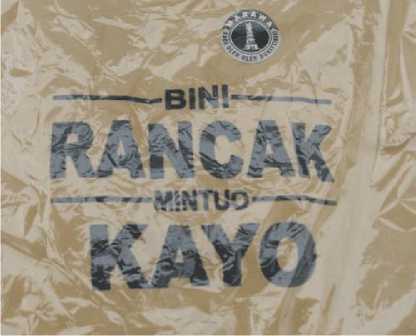
Figure 1: Minangkabau Language on T-Shirt (Doc: Oktavianus, 2022)
The expression in (19) lah banjo 'already taken' illustrates a situation in which someone is bound to a commitment, either a couple of boy and girl friends or the husband and wife. From the context of the written expression, silk-screened placement on the T-shirt tends to illustrate a situation in that someone has had a couple. The already married couples are not interested in wearing such T-shirts. The following data is another example of the Minangkabau language attached to the T-shirt.
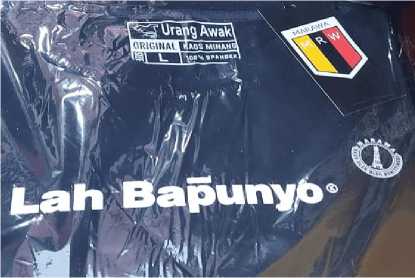
Figure 2: Minangkabau Language on T-Shirt (Doc: Oktavianus, 2022).
Expression in (20) Kadang anta lah tapi baa lah 'sometimes unpredictable but how come' contains a complaint to the complexity of the situation in facing a problem. Once in a while, this expression is expressed by someone having a weak
position in facing the situation. The design of Minangkabau language on the T-shirt is as in the following example.
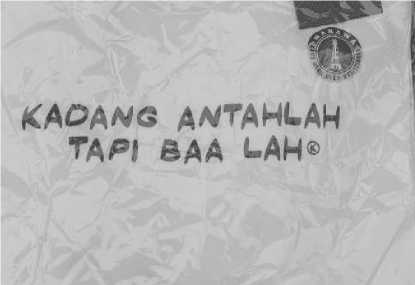
Figure 3: Minangkabau Language on T-Shirt (Doc: Oktavianus, 2022)
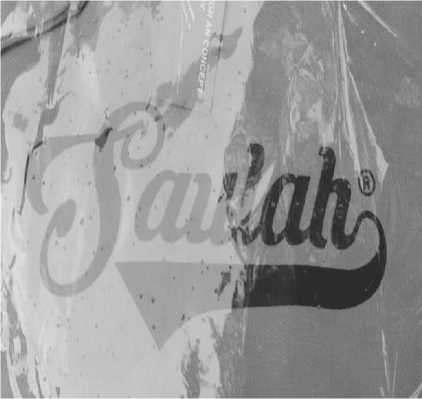
Figure 5: Minangkabau Language on T-Shirt (Doc: Oktavianus, 2022)
The expression in (21) Agiah taruih 'give the devil its dues,' contains a push while mocking someone or a situation could be a labor, but he keeps being pushed to do it. It is usually addressed to somebody disliked. On the T-shirt, it can be seen in the following example.
The expression in (23) Candu Raun 'play addict' illustrates someone dislikes wasting time going around and tends to leave the main job. This expression also contains cynicism and mockery, as illustrated on the T-shirt in the following example.
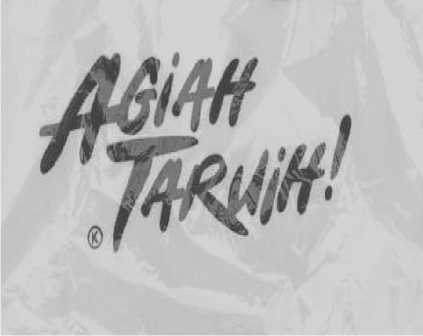
Figure 4: Minangkabau Language on T-Shirt (Doc: Oktavianus, 2022)

Figure 6: Minangkabau Language on T-Shirt
(Doc: Oktavianus, 2022)
The expression on a T-shirt in (22) salah 'manageable' illustrates someone's attitude that tends not to trouble somebody else and is easy to cooperate. It is the picture of a positive attitude in social life. The design of the T-shirt is as follows.
The expression in (24) Mujua ‘fortunate’ illustrate a conducive situation experienced by someone or a group of people. Such a situation is called mujua 'fortunate. It is a picture of a good image built into human life, as in the following illustration on a T-shirt.
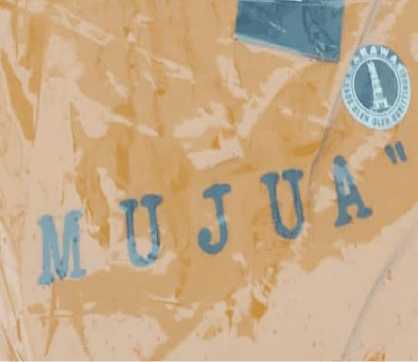
Figure 7: Minangkabau Language on T-Shirt (Doc: Oktavianus, 2022).
The expression in (25) manage 'addicted to' illustrates a condition of something wished very much. In the Minangkabau language, managed 'addicted to' can have positive and negative connotations. It depends on the context of the language used. On the T-shirt, it is displayed as in the following example.

Figure 8: Minangkabau Language on T-Shirt (Doc: Oktavianus, 2022)
-
3. Digital Era.
Technological advances make human civilization develop rapidly. The industrial revolution 4.0, marked by the Internet of Things, fulfills human needs quickly. Almost everything is available on the internet.
The digital era is beneficial for the existence of local languages in Indonesia. Minangkabau language also undergoes the same thing. The digital era strengthens the role of the Minangkabau language as an ethnic identity. In this era, the Minangkabau language is packed digitally and available online to be accessed anytime. Minangkabau language can be accessed and learned not only by native speakers but also by speakers of other languages. These are one of the advantages of the digital era for developing and revitalizing the Minangkabau language as an ethnic identity.
The digital era involves transferring or delivering products to the public from standard packing into digital form. At this time, the Minangkabau language is used widely in cyberspace. The digitization process is carried out on an ongoing basis, along with the increasing need for everything related to Minangkabau cultural products. Minangkabau is rich in cultural products. Some local products are local songs, traditional arts such as rabab, randai, humor, and adat ceremony using Minangkabau figurative and metaphorical languages. They are all available in cyberspace and can be accessed every time.
Minangkabau local songs, for example, are transferred and recorded into mp3 and mp4. One of the well-known Minangkabau local songs is at the link (https://bit.ly/3PZaA92). There are 12 songs that can be accessed through this link. Tiar Ramon and Elly Kasim are two famous singers of those songs. By 29 January 2021, there were 17.650 views of the songs. It implies that people are listening to those songs, and at the same time, they understand the Minangkabau language. The discussion and interview with the speakers of the Minangkabau language showed that they like the
Minangkabau song because they understand it.
Traditional arts are one of Minangkabau's ethnic identities through language. The following link shows examples of traditional arts in the form of rabab (https://bit.ly/3PYYUmG). This rabab is composed in the form of a story. The title of the story of this rabab is Merantau ke Jambi. Rabab generally describes a person's life. The storyline uses Minangkabau's typical vocabulary, which is used sparingly in everyday use of language. Therefore, literary works can be used as media to maintain Minangkabau language. People who listen to the song or watch art performances will have access to Minangkabau language. The other advantage the people get from these digital products is that they can learn to enjoy the Minangkabau language through Minangkabau songs and performance arts.
The other traditional arts in Minangkabau society is randai. One of the examples of randai can be accessed through link (https://bit.ly/3WPmNiV). Randai is performance art. Like rabab, randai is organized in the form of a story. The performance is mixed with dialogue as if the plot of everyday life. There is a dialogue. What is learned from randai is the same as what is learned in the song and rabab. Randai can also be used as the media to build Minangkabau language vocabulary. Non-native speakers of Minangkabau language can practice pronouncing Minangkabau words by listening to and imitating Minangkabau local songs, rabab, and randai. It can also be used to study various Minangkabau expressions and proverbs.
Minangkabau language of adat variation is used in adat ceremonies. One of the examples of this type of language use can be accessed through the
following link (https://bit.ly/3GoKLfl). The title of the adat speech is Pidato Maurak Selo.
Maurak Selo is asking permission to leave party's house for an event, whether a wedding or other adat activities, which is conveyed to the host by the party invited. The text of Pasambahan is also full of figurative language. The use of this type of language is to highlight politeness and courtesy in the Minangkabau language. By 12 September 2021, there were 144.243 views of this adat speech.
What is interesting to note in Minangkabau at this time is that Minangkabau youth today do not only learn the Minangkabau sayings, petatah-petitih, and pasambahan directly from the teachers but also through Youtube channels. It is the digital era's positive contribution to maintaining the Minangkabau language as an ethnic identity.
CONCLUSION
Minangkabau language has a significant and strategic role as a marker of Minangkabau ethnic identity. The process of building ethnic identity through Minangkabau language has been started in the family realm, public and cyber spaces. The use and placement of the Minangkabau language in the family realm, public, and cyberspaces in various designs have positive impact to the existence of the Minangkabau language as ethnic identity.
The digital era with all technological advancements also has positive impact to distribute and maintain Minangkabau language. The transfer of various cultural products using Minangkabau language into the digital forms has advantages. As far as Minangkabau language can be accessed and maintained by its speakers, then their ethnic identity attached to the
language will be able to maintain its continuity.
ACKNOWLEDGEMENT
The author would like to thank the parties who have contributed to this research by supplying the data and information for this study. The author also would like to thank the Faculty of Humanities and Lembaga Penelitian dan Pengabdian kepada Masyarakat, Universitas Andalas which supports this research.
REFERENCES
Alhadi. (2022). Uniknya Pemberian
Gelar Adat di Minangkabau. Newspaper Article, 5 Juli.
De Megalhaes, C. (2010). Public space and the contracting-out of publicness: A framework for
analysis. Journal of Urban Design, 15(4), 559-574.
Errington, F. K. (1984). Manners and Meaning in West Sumatera: The Social Context of Consciousness. Yale: Yale University Press.
Isman, J., Halipami Rasyad., Syahwin Nikelas., Zainuddin Amir and Nuzuir Husin. (1978). Kedudukan dan Fungsi Bahasa Minangkabau di Sumatra Barat. Jakarta: Pusat
Pembinaan dan Pengembangan Bahasa. Menteri Pendidikan dan Kebudayaan.
Jufrizal. (2022). Tipologi Tautan Kata Bahasa Minangkabau. Padang: Get Press.
Marnisa, Z., Oktavianus, O. and Revita, I. (2021). The Form of Linguistic Landscape Name and Gala in Lembah Gumanti Subdistrict. Indonesia Journal of Language Teaching and Linguistics, 6(1), 14– 29.
https://doi.org/10.30957/ijoltl.v6i1.
Nadra. (1997). Geografi Dialek Bahasa Minangkabau. Yogyakarta:
Universitas Gajah Mada.
Naim, M. (2012). Merantau: Pola Migrasi Suku Minangkabau. Yogyakarta: RajaGrafindo Persada.
Nafis, A. (1996). Peribahasa Minangkabau. Padang Panjang: Yayasan Dokumentasi dan Informasi Kebudayaan
Minangkabau.
Navis, A.A. (1984). Alam Takambang Jadi Guru: Adat dan Kebudayaan Minangkabau. Jakarta: Grafiti Pers.
Oktavianus. (2022a). Kiasan dalam Bahasa Minangkabau’. Padang:
Minangkabau Press.
Oktavianus. (2022b). Multimodes and Multiroles of Languages in Public Spaces. Arbitrer, 9(1), 71–79.
https://doi.org/10.25077/ar.9.1.71-79.2022.
Oktavianus and Khairil Anwar. (2022). Local food diversity in Minangkabau. IOP Conference Series: Earth and Environmental Science, 1107(1), 012056.
https://doi.org/10.1088/1755-1315/1107/1/012056.
Oktavianus, O., Khairil Anwar. & Ike Revita. (2018). Linguistic
Landscape of the Names and
Cultural Values of Rumah Makan Minang. V Proceedings of the Sixth International Conference on Languages and Arts (ICLA 2017) (153–159). Paris, France: Atlantis Press. https://doi.org/10.2991/icla-17.2018.27.
Oktavianus and Ike Revita. (2013). Kesantunan dalam Bahasa Minangkabau. Padang:
Minangkabau Press.
Sudaryanto. (2018). Metode dan Aneka Teknik Analisis Bahasa.
Yogyakarta: SIDU Press.
Sources from Youtube Chanel
-
1. Minangkabau local songs (https://bit.ly/3PZaA92).
-
2. Minangkabau traditional arts (rabab) (https://bit.ly/3PYYUmG)
-
3. Minangkabau traditional arts (randai) (https://bit.ly/3WPmNiV)
-
4. Pidato adat (https://bit.ly/3GoKLfl).
Discussion and feedback